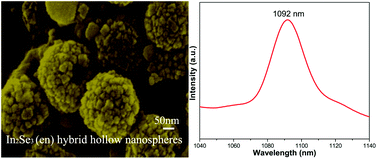A new inorganic–organic hybrid In2Se3(en) as hollow nanospheres: hydrothermal synthesis and near-infrared photoluminescence properties†
Abstract
A new inorganic–organic hybrid In2Se3(en) was synthesized as hollow nanospheres via a facile and controllable


 Please wait while we load your content...
Please wait while we load your content...